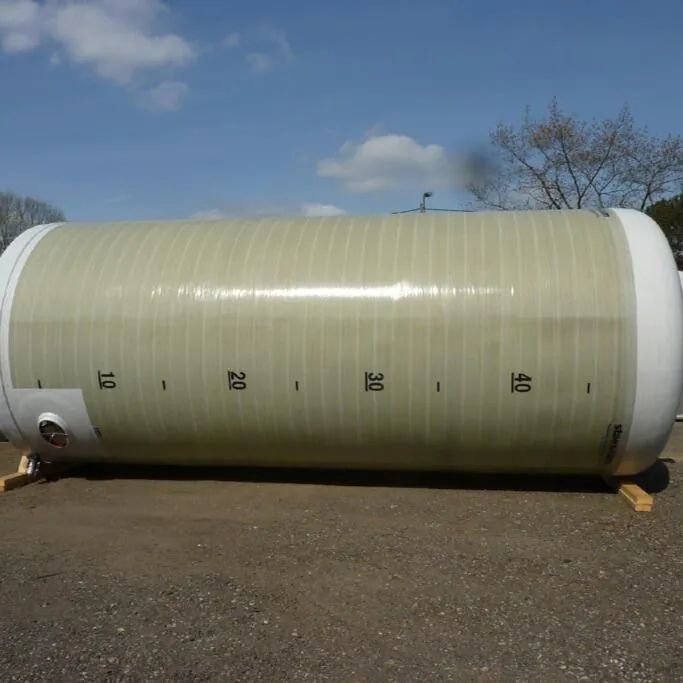
What Requirements Must a Liquid Fertilizer Tank for UAN & AMS Meet?
Liquid fertilizer tanks are widely used in agriculture as they form the basis for efficient and uniform nutrient supply to crops. Among these, UAN tanks (Urea Ammonium Nitrate solution) and AMS tanks (Ammonium Sulfate solution) are particularly common. However, the storage of both types of fertilizers is classified as hazardous to water, which means that tanks used for storing UAN and AMS must comply with specific regulations and requirements.
What Materials Are Suitable for Liquid Fertilizer Tanks?
Liquid fertilizer tanks must be robust, leak-proof, and resistant to chemical influences. Liquid fertilizers often contain aggressive substances like nitrogen, potassium, or phosphorus in concentrated form, which can attack the tank material. Various materials are generally suitable for liquid fertilizer tanks, including:
- Polyethylene (PE)
- Polyester
- Fiberglass Reinforced Plastic (GFRP)
- Steel
- Stainless Steel
Depending on the material, it may be necessary to coat the interior of the tank with an approved lining. Due to the corrosiveness of the fertilizer, this is particularly important for steel tanks. Single-walled storage tanks made of GFRP or polyethylene are only suitable for installation in a containment area.
What Legal Requirements Exist for Liquid Fertilizer Tanks?
The storage of liquid fertilizers in appropriate tank systems is subject to strict regulations in Germany to protect the environment and groundwater. Key regulations include:
- WHG (Water Resources Act): Liquid fertilizers are considered water-endangering substances; therefore, tanks must meet high WHG safety requirements. This includes the obligation to store liquid fertilizers in double-walled tanks (e.g., DIN 6616/2) or, in the case of single-walled tanks, to provide a sufficiently sized containment area.
- Fertilizer Regulation (DüMV): This regulation governs the safe handling of fertilizers, including storage and labeling. Tanks must be clearly labeled to avoid confusion.
- BImSchG (Federal Immission Control Act): For larger storage volumes, additional requirements for ventilation or protective measures against contamination may apply.
Moreover, local building regulations and environmental authority provisions must be observed when installing and operating tanks. The procurement of a liquid fertilizer tank should definitely be coordinated with a TÜV-certified specialist company that is also authorized for the acceptance and commissioning of the tank system. Improper storage can lead to fines or even criminal consequences.
How to Store Liquid Fertilizer Properly?
Proper storage of liquid fertilizer is crucial for environmental protection and personal safety. Here are some basic tips:
- Storage in Suitable Tanks: As mentioned, only double-walled storage tanks approved for liquid fertilizers may be used. These must be regularly checked for leaks. Alternatively, a containment area must be present on-site.
- Safety Distances: Tanks should be installed at least 10 meters away from bodies of water or wells to minimize the risk of groundwater contamination.
- Protection from Weather Influences: Liquid fertilizers should not be exposed to extreme temperatures. Therefore, it is advisable to store tanks in a covered area. Some liquid fertilizers can thicken or crystallize at low temperatures.
- Labeling: Each tank must be clearly labeled to avoid confusion. There should also be indications of the stored substances and the corresponding safety measures.
- Ventilation: Especially for large tanks, adequate ventilation is important to avoid gas accumulation or pressure buildup.
What Tanks Are Suitable for Storing Liquid Fertilizer?
Specially approved tanks are required for storing liquid fertilizers. These tanks differ in size, material, and design. The most common types are:
- Double-Walled Tanks: These provide a particularly high level of protection as the interstitial space of the tank acts as a safety barrier. Double-walled steel tanks for above-ground installation, manufactured according to DIN 6616/02, are widely used. In case of corrosion in the product area, the vacuum leak detection device of the double wall will sound an alarm. Depending on the material, a type-approved interior coating may be necessary for use as a liquid fertilizer tank.
- Stainless Steel Tanks: Stainless steel tanks are particularly corrosion-resistant and versatile, suitable for other media as well. A stainless steel tank may also be suitable for liquid fertilizer storage; however, a type-approved interior coating is often necessary.
- Plastic & GFRP Tanks: Tanks made of polyethylene, polyester, and GFRP are cost-effective, lightweight, and still robust. However, these tanks are only permitted for the storage of liquid fertilizers in conjunction with a containment area. The suitability of the material for your liquid fertilizer should be verified through manufacturer specifications.
- Single-Walled Tanks with Containment Area: If a single-walled tank is to be used for liquid fertilizer storage, it must be placed in a containment area. This area must be capable of containing the tank's volume in the event of a leak and is also subject to regulatory approval.
Conclusion
The storage of liquid fertilizers requires thorough planning and adherence to legal regulations. Choosing the right tank—double-walled or with an external containment area, made of plastic, steel, or stainless steel—is crucial to preventing environmental damage and ensuring operational safety. It is advisable to consult local authorities to consider state-specific requirements when procuring and installing a liquid fertilizer tank. A used tank can also be an option, often significantly cheaper than a comparable new liquid fertilizer tank.
